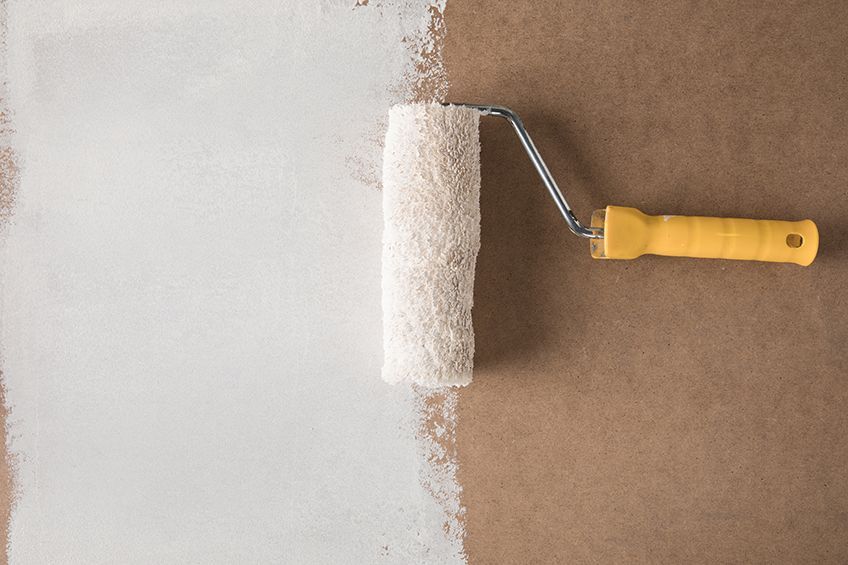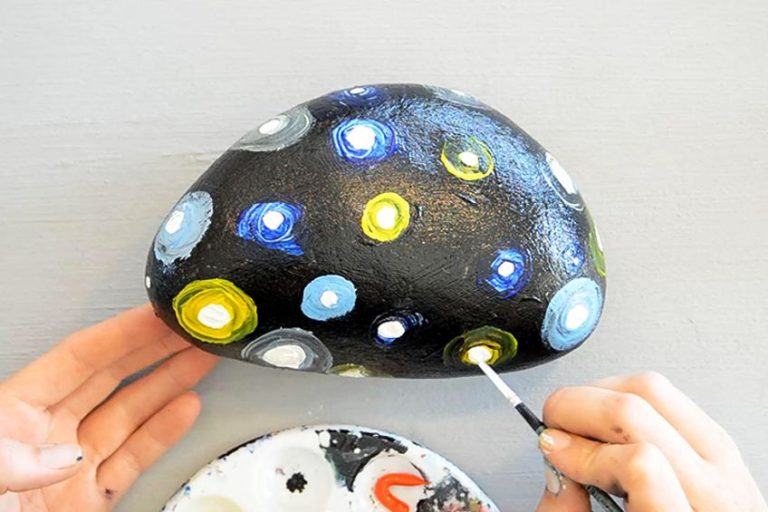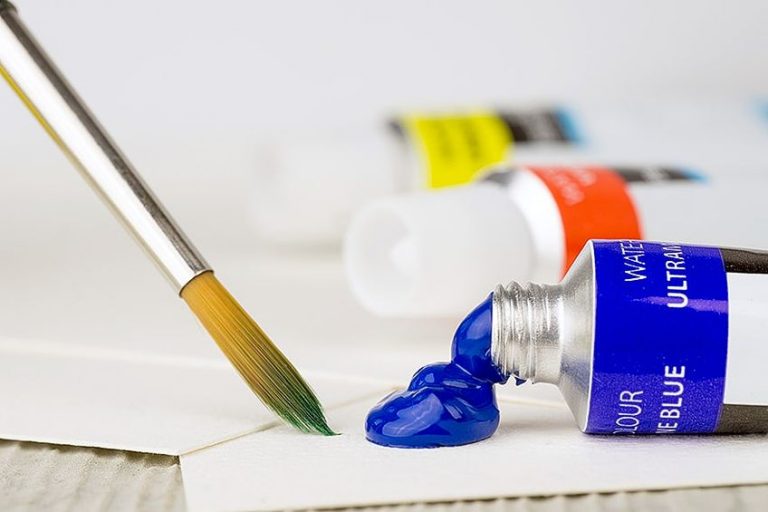What Is Gesso? – All You Need to Know About Gesso Primer
When painting any surface including a canvas, it is always a good idea to use a primer first. This helps to prepare the surface for painting, and one such primer that you most probably have heard of is gesso. Read on to find out what a gesso primer is, how to apply gesso, and where to buy gesso for your next art project.
Table of Contents
What Is Gesso?
An easy definition of gesso would be that it is simply a liquid primer. The most popular gesso primer used today is the acrylic gesso, which dries quite quickly once applied and leaves a slight texture behind on the surface, which helps the paint stick, amongst other uses. Gesso can easily be found at an art store both locally and online and is usually reasonably priced.
The gesso can be described as being similar to white acrylic paint, but it is much thinner. Once applied, this medium dries quickly and stiffens to form a protective layer over the canvas. Otherwise, the paint easily sinks into the surface of the canvas.
Gesso is made out of chalk, a binder, paint pigment, and other chemicals to ensure the flexibility of the product.

You can also apply gesso to most surfaces including canvas, wood, vinyl, cardboard, or rubber and it will produce the same results. So, there are many possibilities and ideas you can achieve. What is acrylic gesso made from?
- Acrylic polymer emulsion
- Calcium carbonate
- Titanium dioxide
The acrylic polymer emulsion is a plastic resin that is suspended in water, while the titanium oxide is a white pigment. Calcium carbonate is commonly known as chalk. This is what then dries and forms a type of plastic film over the surface. The pigment provides an opaque surface, while the chalk adds a matte finish, and provides an absorbent surface and some textures.
Is Acrylic Gesso Necessary?
First, many canvases already come pre-primed, so you do not have to add the gesso. However, many artists prefer to apply some gesso, whether the canvas has been pre-primed or not. If you are going to be painting with oil paints on bare linen canvas, you will need to use a primer as the oil paints can damage the surface material and is often referred to as canvas rot. Applying a layer of acrylic gesso will help stop this as it creates a barrier between the oil paints and the canvas surface.
Before acrylic gesso was available, painters used to mainly use a more traditional gesso that contained animal glue instead of the acrylic polymer emulsion. Lead white paint was also used instead of titanium white and some artists still use it today because it produces better results, however, it is highly toxic. The acrylic gesso is not toxic and a lot cheaper than an oil gesso, which makes it a much more popular choice today.
If you are painting with acrylic paints, it is not necessary to apply a gesso as the paint will not damage the canvas material. However, the paint will still be absorbed by the raw canvas, which uses a lot of paint and prevents artists from applying various techniques properly. So, it is advisable you apply an acrylic gesso in any case.
Is Gesso Required if the Canvas Is Pre-Primed?
When looking for canvases, how can you tell if it is primed or not? When you touch the canvas, and it feels smooth, it has likely been primed. You can also test it out by dropping some water on the surface. The water should remain as a drop on the surface and will not be absorbed if the canvas is primed. A raw and un-primed canvas will soak any water up, and you should be able to see the weave of the canvas when you look closely.
Most of the pre-stretched canvases you find in the shops are already primed, so you can start painting straight away with acrylic paints. However, depending on what you want to achieve with the painting, for example, adding more texture, you might want to consider applying the gesso on a pre-primed canvas. Another one or two gesso layers should help.

To check to see if the canvas is lacking in absorbency and tooth when you apply the paint, it will sink into the canvas and become mottled in appearance. If the paint does this, then adding another layer or two of gesso will help. However, the decision to do this is completely up to you as an artist.
When painting with oil paints, it is okay to add several more layers of acrylic gesso. Many artists also add an oil primer over the acrylic gesso. However, it is not a good idea to apply an acrylic gesso over an oil primer. However, if you are a novice, rather stick to using acrylic gesso.
What Is Gesso Used For?
The main use for acrylic gesso is to form a stable ground that can be used to paint on. The added gesso on canvas provides support so the paint can adhere to the surface better, it also adds more texture and tooth to the painting. Since gesso provides texture, it is also perfect for artists who want control over their brush strokes. The gesso primer can also be used in a lot of other ways. To create super smooth finishes, you can sand each layer of gesso once it has dried and before applying the next. This is perfect for creating those realistic photo paintings. Remember to sand in a space where the air can circulate properly.
You can also use gesso to help cover up mistakes on projects or paintings you are busy with. If you make a mistake while painting, you then cover it up with a little gesso, wait for it to dry, and then paint over it again.
You can also use it for art journaling, so when you apply it to the paper, it helps to strengthen the paper so that any ink or paint will not sink through. Gesso can also cover mistakes and add texture as it usually does. The white gesso can also be used as tinted paint. The white gesso is cheaper than the white paint and it provides a matte finish you might like. If you are looking for a more textural look, something you can more or less sculpt, then a thicker gesso is best. This can then easily be applied using a palette knife.
Types of Gesso
Do you get different types of gesso primer? The traditional gesso is usually opaque and white in color. How, today you can get black gesso, colored gesso, and clear gesso. You can also take the white gesso and tint it yourself with some acrylic paint. The clear gesso can be used, for example, on a wood surface, if you want the wood grain to show through. You also get two grades of acrylic gesso.

Student-Grade Gesso Primer
The student-grade gesso is of lesser quality and contains more fillers and less pigment. Since less pigment is used, the gesso is also cheaper. So, if you are just starting out or a student, this is your best option. You can always change to the better-quality option once you have gained better skills.
As with many products, the quality and consistency of the gesso can vary from brand to brand. You might find that some products seem more watery, while others are thicker. Some gesso products apply more smoothly, while others are more textured. The only way to find the best product is to experiment with the various brands until you find the one you like.
You can purchase gesso in a tub or jar, or you can get it in a squeeze bottle.
The squeeze bottle is easy to use, as you can apply the gesso directly to the canvas and then smooth it out. If you want to add paint and color the gesso, simply add some to your palette and mix in. For the tub or jar, simply dip your brush in and paint onto the canvas. Make sure the brush you use is clean prior to using it.
You can also now get a spray-on gesso, all you do is shake and spray directly onto the canvas surface, without using a brush. Where to buy gesso? As mentioned, you can easily purchase the gesso at a local art supply store or online as all the major oil and acrylic companies produce acrylic gesso.
Artist-Grade Gesso Primer
The artist-grade gesso is for the more professional artist that is looking to add more quality to their paintings. To do this, the gesso needs to be thicker and opaquer, so more pigment than filler needs to be added. Since you are going for quality, the gesso will cost more.

How to Gesso a Canvas
When learning how to apply gesso, it is quite easy. All you need is a flat and wide brush, or no brush if you decide to use the spray gesso. All you need to do is place the brush in the gesso and apply it to the canvas surface. Cover the entire surface in even strokes.
Depending on the gesso you are using, the consistency can vary. Some gessoes can be runny, while others are thicker. Also, depending on your requirements, you might want to thin thick gesso for a smoother coat. All you need to do is add water, making sure to only add a little at a time until the right consistency has been reached. Let us now go through a quick step-by-step guide on how to gesso a canvas.
- How to apply gesso: Once you have the right consistency, apply a thin coat over the entire surface with a stiff, good-quality brush.
- Use another dry brush and run it back and forth over the surface to even out lines and remove any bubbles. Try holding the brush perpendicular to the surface and use a vertical, then horizontal movement to cover the entire surface.
- Allow this to completely dry and then you can sand it to create a smoother surface before applying another layer. You might want to leave the gesso to dry overnight.

- Remember that moisture in the air and room temperature can change the drying times.
- Repeat and apply another two to several more layers, the amount is up to you. You can experiment on more than one canvas to find what you like best.
- Applying multiple thin layers is best for achieving a smooth surface.
- If you are looking for more of a textured consistency, you can try adding texture gel to the gesso.
- Acrylic products dry quickly, so you must work fast and complete each process of priming consistently.
- Once you are finished, clean your brushes thoroughly under running water, and do not leave them to dry with the gesso still on.
Choosing Between Linen or Cotton Canvas
Linen or cotton canvases are a personal choice, and there are a few slight differences between the two. Linen is often smoother in weave, so if you want to paint finer details, it might be a better option. For example, painting portraits do better on linen canvas. Linen canvas is also more durable and lasts longer as it is made from a stronger flax material.
However, linen canvases tend to cost more than the cotton variety. Then there are also wood panels you can try. If you can, and you are serious about painting, try to experiment on different surfaces to see which one you prefer. In almost all of these cases, you will need to add a gesso primer.
Do-It-Yourself Gesso
There seem to be a few recipes for gesso you can try at home, but it is much easier and quicker to simply go to the store and purchase some gesso. It is not expensive, and you are sure to get a better consistency for your paintings. However, if you enjoy experimenting or you have run out of gesso and cannot get to the store, here are a few recipes you can try out.
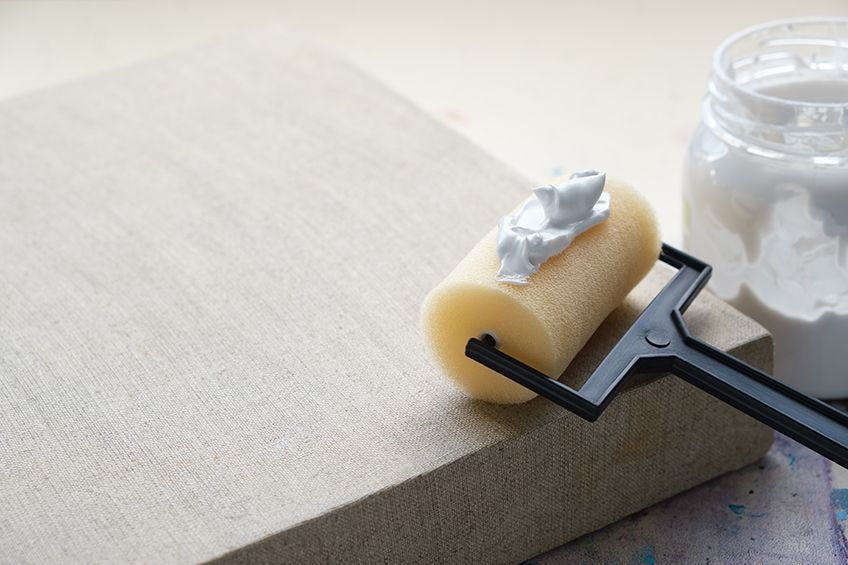
Using PVA Size
This is polyvinyl acetate that is diluted in some still water and is a more current product on the market. To make gesso, you will the PVA size, Chalkdust, and some 400-grain sandpaper. Your first step is to use the PVA size directly on your substrate, cover the entire surface, and then wait for this to dry. You can then mix one part or two parts PVA size, depending on how opaque and thick you want the gesso, to one part chalk dust. Apply this to your substrate and then allow it to dry.
You can then add more layers, and once you are satisfied with the thickness and it is fully dry, you can then sand it smooth.
Cornstarch and Baking Soda Gesso
This is more of a homemade job as most of these ingredients you should have at home already. You can begin by mixing three parts of both the cornstarch and baking soda, making sure all the lumps are gone. Then add one part white glue and one part acrylic paint, which can either be white or black. Mix well, and if you need to, add a little water a bit at a time until the proper consistency is achieved.

Plaster of Paris Gesso
For this you will need one part plaster of Paris, one part PVA glue or any white glue, three parts acrylic paint, which can again either be white or black and finally a little water. The process is quite simple, combine all the ingredients and make sure to mix everything well. Once this has been done, you can slowly add the water.
Add a little at a time until you get the desired thickness.
Gesso With Talcum Powder
All the ingredients for this recipe can easily be found at any local dollar store. You will need about half a cup of school glue, three cups of talcum powder, about two ounces or 59 ml of acrylic paint, and some water. All the recipes follow a similar pattern, by mixing all the ingredients and then slowly adding the water to reach the proper consistency you are looking for. You can also substitute the talcum powder for powdered chalk, for a more traditional recipe.
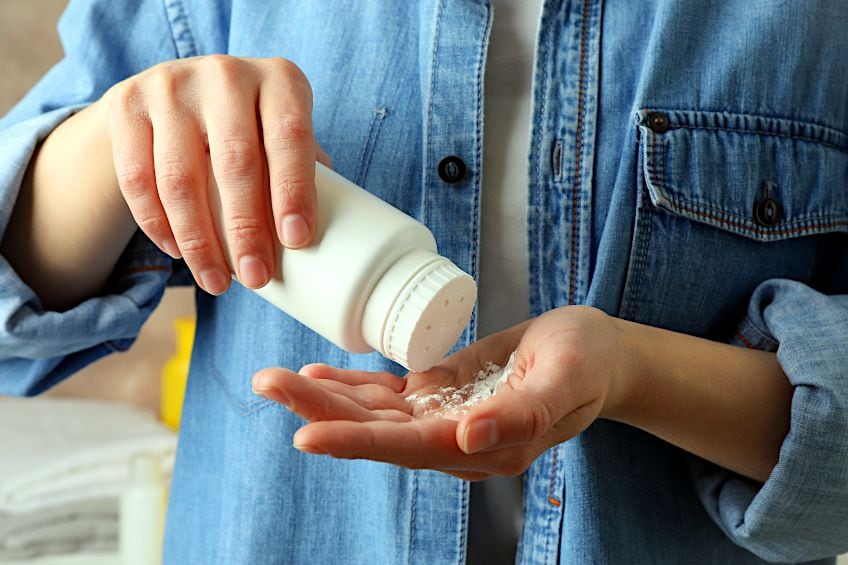
We hope you have learned enough about gesso primer to use or make your own recipes. Gesso is the layer that protects the surface you are working on and helps you to paint your best artwork possible.
Take a look at our gesso webstory here!
Frequently Asked Questions
What Is Gesso?
Acrylic gesso in simple terms is a primer, which helps protect the canvas you are working on when painting and stops the paint from being absorbed too much by the canvas. The gesso also helps the paint adhere to the canvass much more effectively
Can Mod Podge Be Applied Like Gesso?
No, it is not a good idea to use mod podge like gesso. Mod podge and gesso are somewhat similar; however, they are different in their function and makeup. Mod podge is more of a sealer and a gummy adhesive, while the gesso is more of a primer and offers different functions when applied to canvas.
Can You Paint on Canvas Without Gesso?
When dealing with acrylic paints, you do not have to use gesso before painting. However, the raw canvas will soak up the acrylic paint and cause the paint to blotch. So, it is best to apply gesso before painting. Many of the canvases come pre-primed, so you do not have to use gesso, but many artists still prefer to add some coats of gesso anyway.
In 2005, Charlene completed her Wellness Diplomas in Therapeutic Aromatherapy and Reflexology from the International School of Reflexology and Meridian Therapy. She worked for a company offering corporate wellness programs for a couple of years, before opening up her own therapy practice. It was in 2015 that a friend, who was a digital marketer, asked her to join her company as a content creator, and this is where she found her excitement for writing.
Since joining the content writing world, she has gained a lot of experience over the years writing on a diverse selection of topics, from beauty, health, wellness, travel, and more. Due to various circumstances, she had to close her therapy practice and is now a full-time freelance writer. Being a creative person, she could not pass up the opportunity to contribute to the Art in Context team, where is was in her element, writing about a variety of art and craft topics. Contributing articles for over three years now, her knowledge in this area has grown, and she has gotten to explore her creativity and improve her research and writing skills.
Charlene Lewis has been working for artincontext.org since the relaunch in 2020. She is an experienced writer and mainly focuses on the topics of color theory, painting and drawing.
Learn more about Charlene Lewis and the Art in Context Team.


